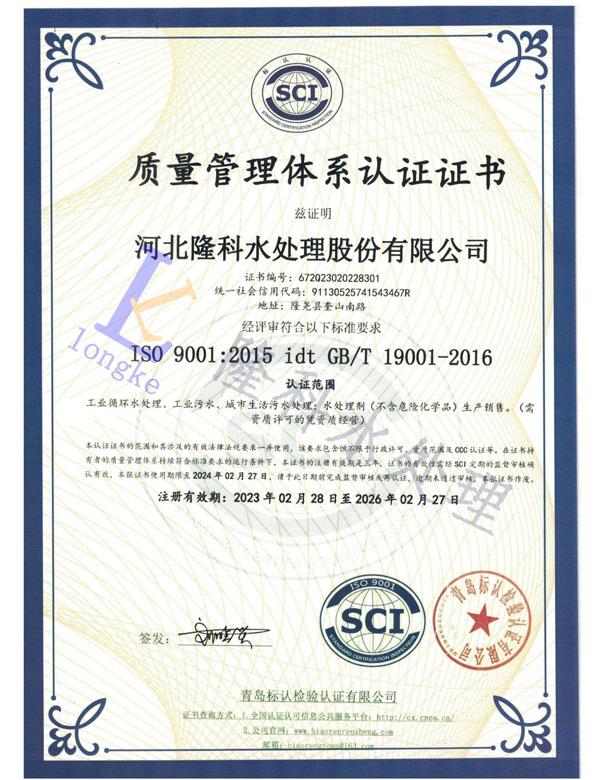Exploring Different Types of Flocculants and Their Applications in Various Industries
Exploring Flocculant Types A Guide to Water Treatment
Flocculants are essential agents widely used in water treatment processes, specifically in sedimentation and coagulation. They enable the aggregation of suspended particles into larger clusters, known as flocs, which can then be easily removed from water. This article delves into various types of flocculants, their mechanisms of action, and their applications in different industries.
Understanding Flocculants
Flocculants generally fall into two categories organic and inorganic. Their choice depends on the specific requirements of the water treatment process, including the nature of the contaminants and the desired water quality.
1. Organic Flocculants These are synthetic or natural polymers that significantly enhance settling rates of suspended solids. - Synthetic Polymers These are commonly used due to their high efficiency and versatility. They usually come in the form of polyacrylamides, which can be cationic, anionic, or non-ionic. Cationic flocculants carry a positive charge, making them effective for negatively charged particles, such as certain clays and colloids. Anionic flocculants, on the other hand, are better suited for treating wastewater with a high concentration of organic matter. Non-ionic flocculants are used in neutral pH settings. - Natural Polymers Derived from natural sources like starch, cellulose, and chitosan, these flocculants are biodegradable and eco-friendly. They are increasingly favored in applications where environmental impact is a concern.
2. Inorganic Flocculants These include metal salts such as aluminum sulfate (alum), ferric chloride, and polyaluminum chloride (PAC). Inorganic flocculants work through a process known as charge neutralization, where positively charged metal ions interact with negatively charged particulates, causing them to coalesce and settle. Alum is the most widely used inorganic flocculant, particularly in municipal water treatment facilities.
Mechanisms of Action
flocculant types

The flocculation process involves several steps dispersion, coalescence, and sedimentation. Initially, flocculants disperse in the water, where they interact with suspended particles. Through diffusion and bridging mechanisms, flocculants facilitate the formation of larger aggregates. Once flocs reach a critical size, the force of gravity allows them to settle at the bottom of the treatment tank. The efficiency of this process is influenced by factors such as the type and dosage of flocculant, pH levels, and water temperature.
Applications of Flocculants
Flocculants have a wide array of applications beyond traditional water treatment. Here are some prominent examples
- Municipal Water Treatment Flocculants play a critical role in purifying drinking water by removing sediments and pathogens effectively. - Wastewater Treatment Industries such as textiles, mining, and food processing utilize flocculants to treat effluents rich in suspended solids, oils, and biological materials. - Paper Production In the paper industry, flocculants help in the retention of fiber and fillers during the pulp and paper-making process. - Mining Operations Flocculants are employed to clarify process water and facilitate the removal of fine particles from tailings.
Conclusion
In conclusion, the right choice of flocculant can significantly influence the efficiency and effectiveness of water treatment processes. While organic flocculants offer flexibility and sustainability, inorganic options typically provide high performance in removing heavy particles. Understanding the different types of flocculants and their unique properties ensures that industries can select the most suitable solution for their particular challenges, ultimately contributing to enhanced environmental sustainability and water resource management. As we continue to battle water pollution and scarcity globally, the role of flocculants in achieving cleaner and safer water becomes increasingly vital.
-
Water Treatment with Flocculant Water TreatmentNewsJun.12,2025
-
Polymaleic AnhydrideNewsJun.12,2025
-
Polyaspartic AcidNewsJun.12,2025
-
Enhance Industrial Processes with IsothiazolinonesNewsJun.12,2025
-
Enhance Industrial Processes with PBTCA SolutionsNewsJun.12,2025
-
Dodecyldimethylbenzylammonium Chloride SolutionsNewsJun.12,2025





